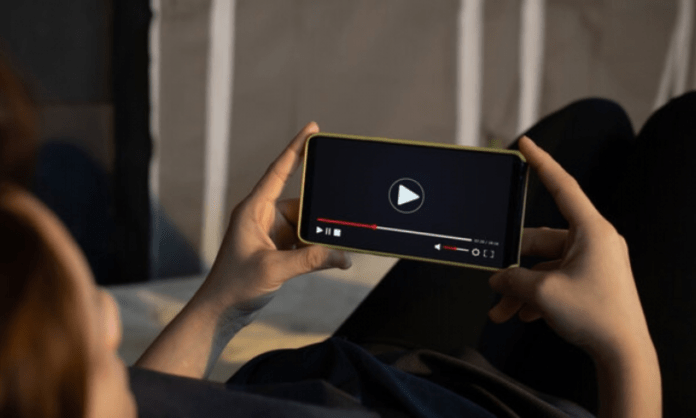Are you a movie enthusiast and like to download movies in high definition ? You've probably heard of the HDLight format , which allows you to enjoy optimal image quality while saving storage space. But what exactly is HDLight? How does it differ from other video formats ? And what are its advantages and disadvantages? In this article, we're going to tell you everything you need to know about HDLight, the video format that's revolutionizing movie downloading .
What is HDLight?

HDLight is a video format that consists of compressing HD or Full HD video , usually with X2651 encoding . The difference with original videos is that videos in HDLight format have a high level of compression, which significantly reduces their size without significantly altering their quality. For example, a 1080p Blu-ray movie can weigh between 20 and 40 GB, while a 1080p HDLight movie can weigh between 2 and 4 GB. HDLight therefore makes it possible to download movies faster and store them more easily. on media such as USB sticks, external hard drives or NAS .
What are the advantages of HDLight?

The main advantage of HDLight is that it offers an excellent compromise between quality and size. Indeed, HDLight allows you to enjoy image quality close to that of Blu-ray , while taking up much less space. The HDLight is therefore ideal for people who have a limited internet connection or reduced storage space. In addition, HDLight is compatible with most media players, whether on a computer, smartphone, tablet or television. All you need is a player capable of reading the X265 codec, which is becoming more and more widespread.
What are the disadvantages of HDLight?
The main disadvantage of HDLight is that it is not as faithful to the original source as Blu-ray . Indeed, HDLight involves a loss of quality due to compression, which can result in artifacts, blurring or less vivid colors. HDLight may also have lower audio quality than Blu-ray , especially if the audio is compressed to MP3 or AAC instead of DTS or Dolby Digital . HDLight is therefore less suitable for people looking for optimal quality and who have efficient audiovisual equipment.
How to choose between HDLight and Blu-ray?

The choice between HDLight and Blu-ray essentially depends on your personal preferences and technical constraints. If you prefer quality over quantity, and you have a fast internet connection, a sufficient mobile plan and sufficient storage space, you can opt for Blu-ray , which will offer you a cinematic experience incomparable. If you value quantity over quality, and have a slow internet connection or limited storage space, you can opt for HDLight, which will allow you to download more movies without sacrificing too much quality.
Video format comparison table
| Format | Source | Resolution | Size | Quality |
| Blu-ray | Blu-ray Disc | 1920x1080 | 20 to 40 GB | Excellent |
| HDLight | Compressed HD or Full HD video | 1920x1080 | 2 to 4 GB | Very good |
| BDRip | Blu-ray Disc | Variable | 700 MB to 1.4 GB | Good |
| HDRip | HD source without precision | Variable | Variable | Average |
| WebRip | Streaming source on the internet | Variable | Variable | Average |
| DVDRip | DVD disc | Variable | 700 MB to 1.4 GB | Poor |
FAQs
What is the difference between BDRip and HDLight?
BDRip is a copy of HD Blu-ray, often in .AVI or .MKV with various encodings (x264, Xvid, etc. ) . Although the source is in HD (Blu-Ray), the BDRip is not encoded in HD. Its quality varies depending on the size of the file: the larger the file, the better the quality. Just like DVDRip , there are generally two standard sizes: 700 MB and 1400 MB. HDLight, for its part, is a compressed HD or Full HD video, usually with X265 encoding . HDLight has a high level of compression, which significantly reduces its size without significantly altering its quality. For example, a 1080p HDLight movie can weigh between 2 and 4 GB.
What is the difference between HDRip and HDLight?
HDRip is a video format which consists of extracting a video from a High Definition source without further precision . A special case of HDRip is BDRip, a copy of High Definition Blu-ray, but HDRip can also come from a Web source, for example a WebRip. Although the video is ripped from an HD source, most of the time when the term HDRip is used alone, the file created will have a standard resolution to be less large, often close to 720 x 396 pixels. HDLight, on the other hand, is compressed HD or Full HD video, usually with X265 encoding . HDLight has a high level of compression, which significantly reduces its size without significantly altering its quality. For example, a 1080p HDLight movie can weigh between 2 and 4 GB .
What is the difference between WebRip and HDLight?

A WebRip is a copy made from a source streamed on the internet. Streaming platforms such as Netflix, Amazon Prime or Hulu, for example, offer high-quality videos. The quality of a WebRip depends on the streaming source and the encoding used. However, due to compression and transmission, WebRips may have defects such as artifacts or lower audio quality. HDLight, on the other hand, is compressed HD or Full HD video, usually with X265 encoding. HDLight has a high level of compression , which significantly reduces its size without significantly altering its quality. For example, a 1080p HDLight movie can weigh between 2 and 4 GB.
What is the difference between 720p and 1080p?
720p and 1080p are high definition video formats that refer to the number of pixels over the height of the image. 720p has a resolution of 1280 x 720 pixels, while 1080p has a resolution of 1920 x 1080 pixels . 1080p therefore offers better image quality than 720p, but it also requires more storage space and more bandwidth to be transmitted.
What is the difference between X264 and X265?
X264 and X265 are video codecs used to encode and compress videos . The X264 uses the H.264 or MPEG-4 AVC (Advanced Video Coding) standard, while the X265 uses the H.265 or HEVC (High Efficiency Video Coding) standard. The X265 offers better compression efficiency than the X264 , which means it can produce the same quality videos at a smaller size . However, X265 also requires more computing power to encode and decode.
What are DTS and Dolby Digital?
DTS and Dolby Digital are digital audio formats used to encode and compress sound. DTS uses a higher bit rate than Dolby Digital, which allows it to reproduce more faithful and dynamic sound. Dolby Digital uses a lower bit rate than DTS, allowing it to take up less storage space and bandwidth. DTS and Dolby Digital are compatible with 5.1 surround sound , which creates an immersive soundscape.
What is 3D?

3D is a technology that creates an illusion of depth in images . 3D uses the principle of stereoscopy, which consists of presenting two slightly offset images to each eye, which creates a perception of relief. 3D requires the use of specific hardware, such as a 3D screen, 3D glasses or a virtual reality headset.
Conclusion
HDLight is a video format that is revolutionizing movie downloading. It allows you to enjoy image quality close to that of Blu-ray, while taking up much less storage space. The HDLight is ideal for people who have a limited internet connection or limited storage space. However, HDLight is not as faithful to the original source as Blu-ray, and it may have lower audio quality. The choice between HDLight and Blu-ray therefore depends on your personal preferences and your technical constraints.




